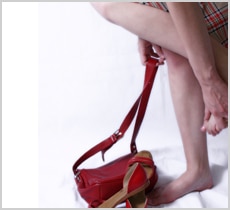Bunions, those painful and unsightly bony lumps that often develop at the base of the big toe, have been a cause of discomfort and inconvenience for many people. In the past, the prevailing belief was that the only solution for bunions was surgery. However, with advancements in podiatry and footwear technology, we now know that there are effective ways to prevent and manage bunions without resorting to surgical intervention.
In this updated article, we will delve deeper into the causes of bunions, exploring the latest insights on their development. We will also discuss a wide range of preventive measures and treatment options, making this a comprehensive guide to help you take control of your foot health.
Understanding Bunions
Bunions, or hallux valgus, are deformities that affect the joint at the base of the big toe. They result in the big toe pointing inward toward the other toes, causing the joint to protrude outward. This often creates a painful bump that can interfere with your daily activities, limit your choice of footwear, and impact your overall quality of life.
The root causes of bunions are multifaceted, and various factors can contribute to their development. It’s crucial to be aware of these factors to effectively prevent and manage bunions.
Footwear Choices
One of the most significant factors contributing to the development of bunions is improper footwear. High heels and shoes with narrow toe boxes can force the toes into an unnatural position, pushing the bones out of alignment. This continuous pressure and distortion of the foot’s natural structure can lead to the formation of bunions.
To prevent bunions, you should prioritize wearing shoes that provide proper support and allow your toes to spread naturally. Visiting a specialty shoe store or consulting a professional fitter can help you find the right footwear that accommodates your feet without putting pressure on the affected area.
Hereditary Factors
Bunions often have a hereditary component. If your parents or grandparents have experienced bunions, your risk of developing them may be increased. While you can’t change your genetic predisposition, knowing your family history can motivate you to take proactive measures to prevent bunions.
Foot Injuries
Injuries to the foot, such as a broken toe, can alter the foot’s shape and structure, making bunions more likely to form. Ensuring that foot injuries are treated and supported correctly during the healing process is essential for preventing bunions from developing as a result of trauma.
Inflammatory Conditions
Conditions like arthritis and diabetes can lead to inflammation in the feet. Swelling and inflammation can contribute to the misalignment of the big toe, making bunions more likely to occur. Managing these conditions and seeking appropriate medical care is essential to reduce the risk of bunions.
Early Intervention
One crucial aspect of preventing bunions is recognizing the early signs of their development and taking action promptly. If you notice the beginnings of a bunion, consider using toe separators to realign your toes or wearing splints at night to correct the alignment of the bones. Timely intervention can help slow down or even stop the progression of the bunion.
Prevention and Management Strategies
Now that we have a deeper understanding of the causes of bunions, let’s explore comprehensive prevention and management strategies to maintain healthy and pain-free feet.
Footwear Choices
Choose your shoes wisely. Opt for footwear with a wide toe box that allows your toes to move freely. Look for shoes with adequate arch support and cushioning. Avoid high heels and narrow-toed shoes, as these can exacerbate the problem. Consulting a professional fitter or visiting a specialized shoe store can be immensely helpful in finding the right shoes for your needs.
Orthotic Inserts
Custom arch supports and orthotic inserts can provide essential support and help redistribute pressure away from the bunion. These inserts are designed to enhance foot alignment and relieve discomfort. A podiatrist or a professional at a store like Foot Solutions can assess your needs and recommend the most suitable orthotics.
Toe Exercises
Exercises that promote toe flexibility and strength can be beneficial in preventing and managing bunions. Simple exercises like toe stretches and toe spreads can help maintain proper alignment and reduce discomfort. Consulting with a physical therapist or podiatrist for personalized exercise routines is advisable.
Bunion Splints
Bunion splints are devices that can be worn at night to maintain the proper alignment of the big toe joint. These splints can help slow down the progression of the bunion and relieve pain. Your healthcare provider can recommend the right type of splint for your condition.
Anti-Inflammatory Measures
If you have conditions like arthritis or diabetes that contribute to inflammation in the feet, managing these conditions effectively is essential. Consult with your healthcare provider for medications, lifestyle changes, and treatments to reduce inflammation.
Regular Check-Ups
Regular visits to a podiatrist or foot specialist are crucial for monitoring your foot health. They can provide guidance on preventive measures and early intervention strategies to keep your feet in good shape.
Conclusion
Bunions can be painful and disruptive, but with the right knowledge and proactive measures, you can prevent their development and manage existing bunions effectively. Remember that choosing appropriate footwear, using orthotic inserts, performing toe exercises, and seeking professional advice are all essential steps in your journey to healthier, pain-free feet.
Don’t let bunions control your life. By following the updated guidance in this article, you can take charge of your foot health, avoid unnecessary surgery, and enjoy a more comfortable, active lifestyle. Visit a foot specialist or a podiatrist for personalized guidance, and start your journey to bunion prevention and management today.

































